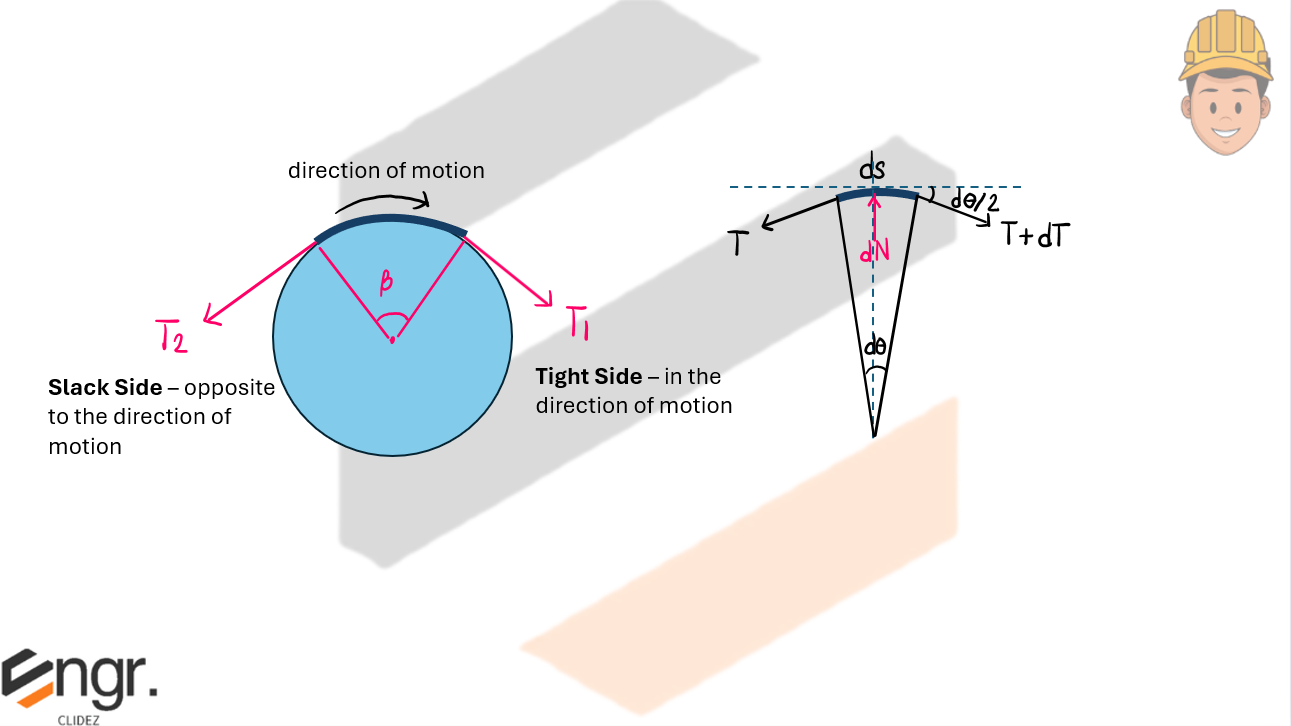
To derive the belt friction equation, consider an infinitesimal element of the belt that subtends a small angle \( d\theta \) on the surface of a pulley. Tension forces on either side of this segment are:
These forces are separated by an angle \( d\theta \), so they each deviate from the central direction by \( \frac{d\theta}{2} \). A normal force \( dN \) acts radially inward, and the frictional force \( dF \) opposes the relative slipping motion.
In equilibrium (neglecting second-order small terms), summing forces in the tangential direction yields:
In the normal direction:
Substituting into the tangential equation:
Separating variables:
Integrating from \( T_2 \) to \( T_1 \), and from \( 0 \) to \( \beta \):
This final equation relates the tensions on the tight and slack sides of a belt in contact with a surface over an angle \( \beta \) (in radians), where \( \mu \) is the coefficient of static friction.







